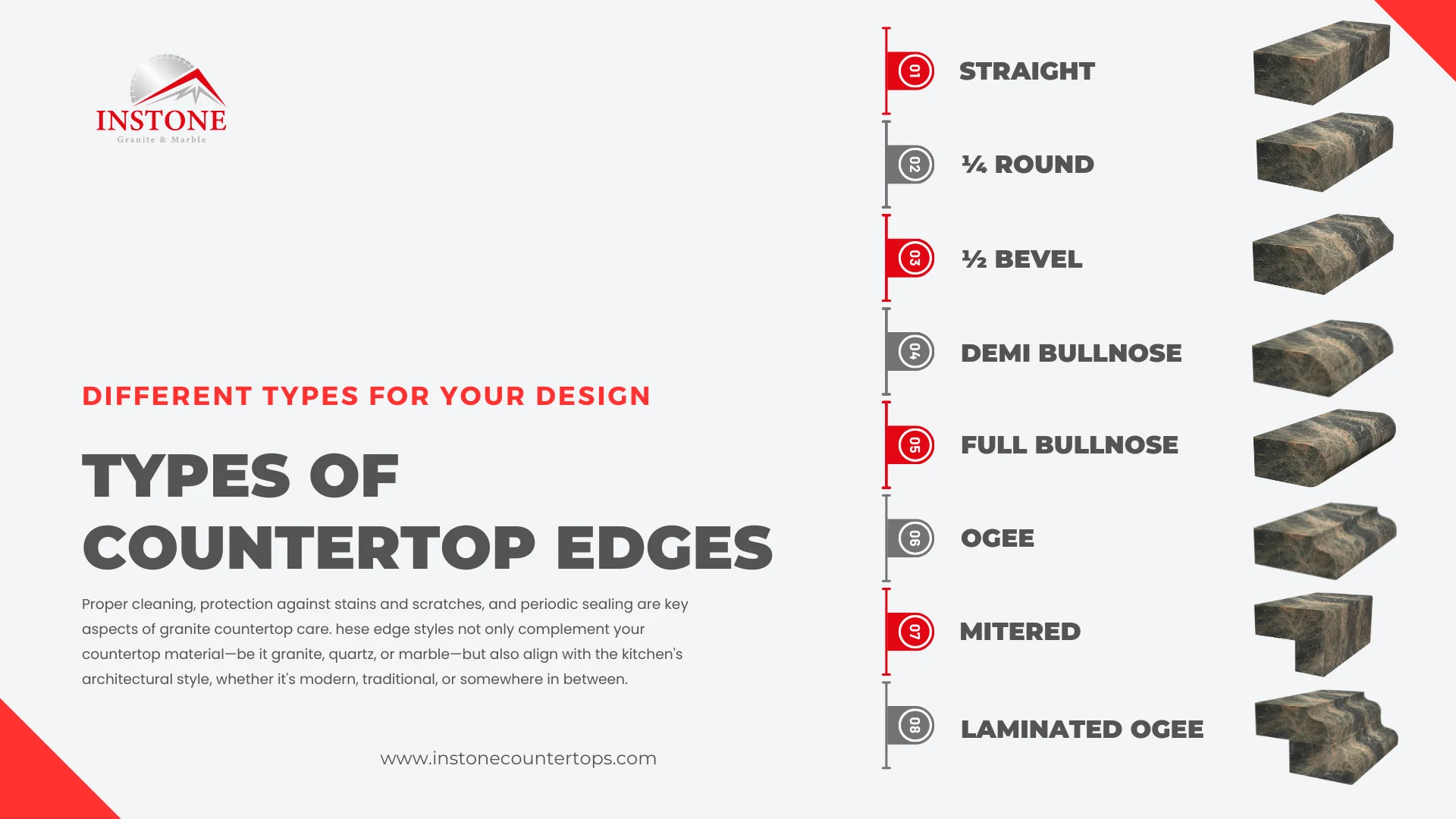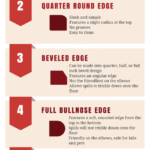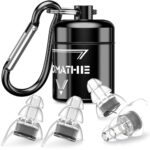When it comes to upgrading your kitchen or bathroom, choosing the right countertop edge might seem like a small detail. But in reality, it plays a significant role in the overall look and functionality of your space.
You’re about to discover why this decision is more important than you might think. Each type of countertop edge has its own set of pros and cons, and understanding these can be the key to creating a space that perfectly matches your style and needs.
Are you ready to delve into the world of countertop edges and find out which one will complement your home best? Keep reading, and you’ll not only become savvy about countertop choices, but you might also find the perfect edge that will transform your space.
Popular Countertop Edge Styles
Choosing the right countertop edge style is essential for kitchen design. Each style offers a unique look and feel. The edge style can enhance the overall aesthetic of your space. Let’s explore some popular countertop edge styles. Discover their pros and cons to help you decide.
Straight Edge
The straight edge provides a clean, modern look. It’s simple and minimalist. This edge is easy to clean and maintain. Ideal for contemporary kitchens. The downside? It can appear too sharp or harsh. Not recommended for homes with small children due to the sharp corners.
Beveled Edge
The beveled edge has a sleek, angled design. It adds a touch of elegance. This edge style is versatile and suits many kitchen designs. Easy to clean, it hides minor scratches well. On the downside, it requires more precision during installation.
Bullnose Edge
The bullnose edge features a smooth, rounded shape. It offers a soft, classic look. This edge is kid-friendly and safe. It complements both modern and traditional kitchens. The downside is, it can make countertops appear thinner than they are.
Ogee Edge
The ogee edge has a dramatic, curved design. It adds a luxurious feel to any kitchen. Perfect for traditional or elegant spaces. It enhances the countertop’s thickness. The downside? It can be difficult to clean and costs more to install.
Eased Edge
The eased edge is slightly rounded at the top. It offers a subtle, soft look. This edge style is simple yet stylish. Easy to maintain and clean. It works well in any kitchen design. The downside? It lacks the dramatic effect of other styles.

Credit: stonespecialists.net
Factors To Consider
Choosing the right countertop edge isn’t just about style—it’s a practical decision that can impact your daily life in the kitchen. As you weigh your options, consider how each edge can affect the aesthetics, functionality, safety, and maintenance of your kitchen space. Each factor plays a crucial role in ensuring your kitchen is both beautiful and efficient.
Kitchen Aesthetics
Your kitchen’s aesthetic sets the tone for your home. Countertop edges significantly influence this vibe. Picture a sleek, modern kitchen with sharp, clean lines. A straight edge might complement this perfectly. But if your space is more traditional, a beveled or bullnose edge could enhance its charm. Reflect on your kitchen’s existing style and how different edges can amplify or detract from it.
Functionality
Functionality should never be an afterthought. Do you often find yourself balancing plates and cups on your countertop edges? Rounded edges, like a bullnose, can help prevent items from slipping off. Meanwhile, a waterfall edge, though stylish, might not offer the same practical benefits. Consider your cooking habits and how edge design can support or hinder them.
Safety Concerns
Safety is paramount, especially if you have young children. Sharp edges can be hazardous. Rounded edges are generally safer and can prevent nasty bumps and bruises. Think about how often kids play or move around your kitchen. Is an accident waiting to happen? Choose an edge that minimizes risks for all family members.
Maintenance Needs
Maintenance is a reality. Some edges, like intricate designs, can collect dirt and require frequent cleaning. A simple eased edge might be easier to wipe down daily. Reflect on how much time you’re willing to spend on cleaning. Are you prepared to scrub every nook and cranny? Choose an edge that fits your maintenance preferences.
As you consider these factors, remember your kitchen should be a place where form meets function. How do you envision using your kitchen? Your answer can guide you in selecting the countertop edge that best suits your lifestyle.
Material Compatibility
Choosing the right countertop edge depends on material compatibility. Different materials support different edge styles. This affects both aesthetics and function. Understanding these compatibilities helps in making informed decisions.
Granite
Granite is a popular choice for countertops. It supports a variety of edge styles. Bullnose and beveled edges are common. Granite is durable. It handles intricate designs well. Its natural patterns enhance any edge style. Consider the color and pattern before selecting an edge. Some edges may highlight certain patterns better.
Quartz
Quartz countertops offer uniformity in design. They accommodate a wide range of edges. Eased, ogee, and waterfall edges are popular. Quartz’s engineered nature makes it versatile. It’s non-porous and resists stains. This makes maintenance easy. Consider edge thickness for a modern look. Thicker edges create a bold statement.
Marble
Marble provides elegance and sophistication. Its softness requires careful edge selection. Pencil and half bullnose edges work well. These edges minimize chipping risks. Marble’s veining adds drama to any edge. It demands regular sealing. This ensures longevity. Choose edges that protect the surface and enhance beauty.
Laminate
Laminate is budget-friendly and versatile. It supports simple edges like square and post-formed. Its lightweight nature limits intricate designs. Laminate edges can mimic other materials. This adds flexibility in design. It’s easy to install and replace. Consider edge banding for a seamless appearance. Laminate offers many colors and patterns.
Cost Implications
Choosing the right countertop edge can impact your budget. Different styles have varying costs. Knowing the cost implications helps you make informed decisions.
Budget-friendly Options
Basic edges like square or eased are affordable. They fit well in tight budgets. These edges require less material and labor. This keeps the cost down. Bullnose edges are also budget-friendly. Their round shape is simple to produce. They add a soft look without extra expense.
Laminate countertops offer many edge styles. They are cost-effective. You can mimic stone or wood edges. This provides a stylish look at a lower price. DIY enthusiasts can save money. Installing simple edges yourself reduces labor costs.
High-end Choices
Premium edges elevate the look of your kitchen. Ogee edges add elegance. They feature curves and intricate details. This requires skilled craftsmanship. The cost reflects the complexity involved. Waterfall edges are another high-end option. They create a seamless flow. This design uses more material, increasing the price.
Granite and marble edges are luxurious. They offer unique patterns and textures. The natural beauty comes with a higher price tag. Custom edges allow for personalization. They offer one-of-a-kind designs. These edges suit those willing to invest more. High-end choices make a statement in upscale homes.
Durability And Longevity
Countertop edges influence durability and longevity. Rounded edges resist chipping, making them last longer. Sharp edges can chip easily but offer a sleek look. Choose wisely based on your kitchen needs and style.
When considering new countertops, durability and longevity are critical factors. The right countertop edge can enhance not just the look of your kitchen or bathroom, but also its resilience over time. While beauty is a key consideration, the edge you choose should withstand daily wear and tear. Let’s dive into how different countertop edges stack up in terms of scratch and stain resistance.Scratch Resistance
Scratch resistance is a major consideration when choosing countertop edges. Some edges, like the simple square or eased edge, are less likely to show scratches. They offer a smooth surface that can withstand the rigors of daily kitchen activities. On the other hand, more intricate edges like ogee or bevel might look stunning but can be more prone to scratching, especially in busy households. Have you ever noticed how small scratches can become a big eyesore? Consider the activity level in your home when choosing an edge style.Stain Resistance
Stain resistance is another crucial aspect of countertop edge durability. Rounded edges tend to repel spills better, reducing the chance of stains from liquids like coffee or wine. A rounded edge can prevent liquids from pooling, making it easier to clean and maintain. In contrast, intricate designs can have grooves where spills can settle, increasing the risk of stains. If you enjoy hosting dinner parties or have kids who love experimenting in the kitchen, you might want to prioritize stain resistance in your choice of countertop edge. When selecting your countertop edge, think about your lifestyle and daily habits. What durability features are most important to you? Balancing aesthetics with practicality can lead to a choice you’ll appreciate for years to come.Aesthetic Appeal
Exploring countertop edges reveals their aesthetic impact on kitchen design. Rounded edges offer safety and smooth lines. Sharp edges provide a modern look but may chip easily. Each style has its own visual charm and practical benefits.
When selecting countertop edges, aesthetic appeal plays a crucial role in the overall look of your kitchen or bathroom. It’s not just about the utility of your countertops; it’s about how they complement your space. The right edge can transform a simple slab into a stunning focal point. Deciding on a countertop edge that aligns with your style can be a game-changer. Do you prefer a sleek, modern look or a classic, traditional feel? Each style has its unique charm and can significantly impact the ambiance of your room.Modern Styles
Modern countertop edges are all about clean lines and simplicity. Think about the crisp elegance of a straight edge or the subtle sophistication of a beveled edge. These styles work well in contemporary settings, where minimalism is key. Consider how a flat polish edge can make your kitchen feel more spacious and open. It’s a subtle detail that echoes modern design principles. You might notice how this style easily blends with stainless steel appliances and high-gloss cabinets. Have you ever noticed how a mitered edge can make a statement with its waterfall effect? This style is not just a trend; it’s a testament to craftsmanship. It’s perfect for those who want their countertops to be a conversation starter.Traditional Looks
Traditional countertop edges exude warmth and comfort. They often feature more intricate designs, like an ogee or bullnose edge. These styles are perfect for creating a cozy and inviting atmosphere in your home. Imagine walking into a kitchen where the countertops have a rounded bullnose edge. It immediately feels welcoming, doesn’t it? This style is timeless and pairs beautifully with wood cabinetry and classic fixtures. Have you ever run your fingers along an ogee edge and felt the craftsmanship? This design adds a touch of elegance and is perfect for a more formal setting. It’s a choice that speaks to a love of detail and tradition. Choosing between modern and traditional styles can be daunting. But think about the mood you want to set in your space. What story do you want your countertops to tell?Diy Vs Professional Installation
Choosing between DIY and professional installation for countertop edges involves weighing pros and cons. DIY offers cost savings and personal satisfaction but may lack precision. Professional installation ensures accuracy and durability, though it may be more expensive. Consider your skills and budget before deciding.
Choosing between DIY and professional installation for your countertop edges is a decision many homeowners face. This choice can impact the overall look, cost, and durability of your kitchen or bathroom surfaces. Understanding the key differences can help you make a more informed decision.Skill Requirements
Taking the DIY route means you’ll need a certain level of skill and patience. If you have experience with woodworking or similar home improvement projects, you might find this task manageable. However, if you’re a novice, the precision required for cutting and installing might be overwhelming. On the other hand, hiring professionals ensures that the job is done with expertise. They bring specialized tools and experience that can make the process smoother and faster. Consider your own skill level honestly—are you prepared to handle unforeseen challenges?Cost Considerations
DIY projects can save you money upfront. You’ll avoid labor costs and have control over where to purchase materials. However, mistakes can be costly, potentially leading to wasted materials and time. Professional installation might come with a higher price tag, but it can also offer peace of mind. You’ll likely get a warranty or guarantee on the work, which can save you money on future repairs. Think about what value you place on your time and stress levels when considering these costs. Ultimately, whether you decide to tackle the installation yourself or hire a professional, weigh the pros and cons carefully. Do you have the time and skills to do it yourself, or is it worth paying someone for a flawless finish? Your choice can significantly impact your satisfaction with your new countertop edges.
Credit: alliedgallery.com

Credit: instonecountertops.com
Frequently Asked Questions
What Are Common Types Of Countertop Edges?
Countertop edges include bullnose, beveled, ogee, and straight. Each offers different aesthetics and functionality.
How Does Bullnose Edge Affect Countertop Durability?
Bullnose edges are rounded, reducing chipping. Their smooth finish enhances durability and safety.
What Is The Cost Difference Between Edge Types?
Complex edges like ogee are more expensive. Simple edges, like straight, are budget-friendly.
Which Edge Is Best For Modern Kitchens?
Straight edges suit modern kitchens. They provide a sleek, minimalistic look.
Do Beveled Edges Require Special Maintenance?
Beveled edges need regular cleaning. Dirt can accumulate in the angled surfaces. Simple cleaning tools suffice.
Conclusion
Choosing the right countertop edge can feel overwhelming. Each option has its perks and drawbacks. Bullnose edges offer safety with their rounded shape. Beveled edges add a touch of elegance. Ogee edges make a bold statement in any kitchen. Square edges provide a clean and modern look.
Consider your style and function needs. Think about maintenance and budget too. The best edge for your countertop is one that matches your lifestyle. Take your time to decide. A good choice will enhance your kitchen’s beauty. Remember, your countertop is a lasting investment.





